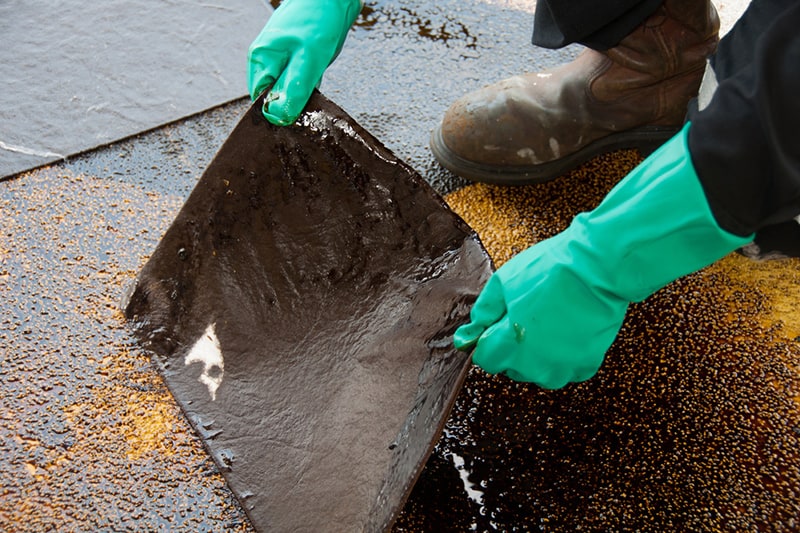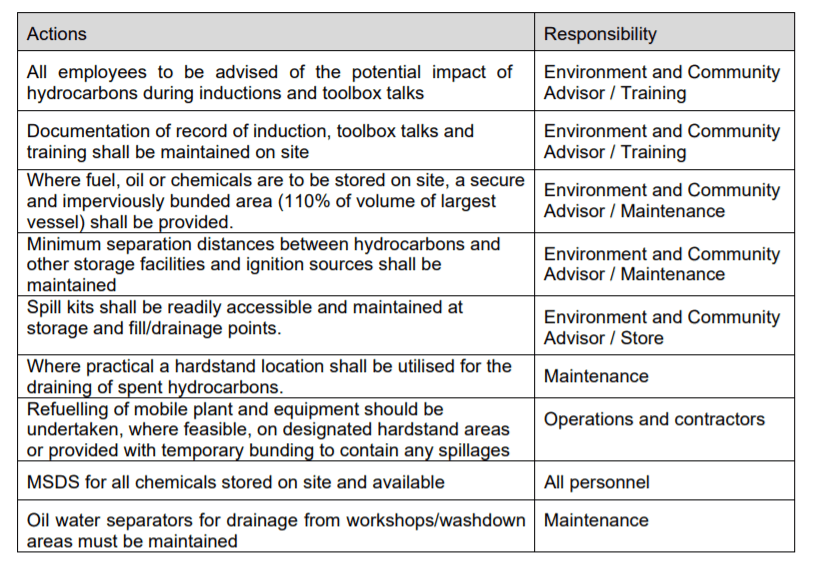How to Deal with A Hydrocarbon Spill Effectively | Ecospill Spill Kits

Serving as both a fuel and lubricant, the use of hydrocarbons on worksites is common practice. Apart from being highly flammable, a hydrocarbon spill can contaminate the environment, damaging plant and animal life. It can also work its way into nearby water sources through the soil if not cleaned up effectively.
Businesses have environmental obligations to fulfil to protect our flora and fauna and to avoid hefty fines. In this article we discuss hydrocarbon spill kits, dealing with hydrocarbon spills and how to prevent them.
HYDROCARBON SPILL RESPONSE
Anywhere that fuels and oils are stored, transported or transferred from one container to another has potential for a hydrocarbon spill to take place. The longer a hydrocarbon spill is left unattended to, the more damage it inflicts. So, time is of the essence. And the first step to a speedy clean up is having an effective hydrocarbon spill response plan in place.
Below you will find the appropriate steps to take in the case of a hydrocarbon spill. Please note that this is the general order in which the steps should be taken. The exact order in which you take these steps may depend on the nature and extent of the spill at hand.
ASSESS
Before anything else happens, the spill needs to be assessed. This allows for the full scale of the situation to be determined, including:
- Type of hydrocarbon spill
- Location of the spill
- Source of the spill (and determine if it can be isolated)
- The ability of the onsite personnel to control the spill
- Safety and PPE requirements
SECURE
The next step involves the securing of the spill. This step is important to prevent personnel unnecessarily accessing the area of the spill. It involves communicating the spill to all staff in or close to the spill location and using a barricade or signage to mark the location of the spill.
CONTROL
The source of the spill as identified in the assessment stage needs to be isolated. This stops the spill from getting larger. The spill will then need containing which may be done with bunding or absorbent booms, for example.
ABSORB
Now that the spill is contained and controlled, it’s time to begin the clean-up. A hydrocarbon spill requires conversion from a liquid state to a solid-state to ease the clean-up. This can be done using absorbents including absorbent booms, absorbent pads and granular absorbents.
These absorbents can be found in a hydrocarbon spill kit. Should an effective management plan be in place, a spill kit should be in proximity to the spill location.
DISPOSE
The nature and extent of the spill will determine the suitable method of disposal. The environmental department can advise on the correct disposal methods for different kinds of spills. Used absorbent materials need to be placed in tied disposable bags and then into regulated waste bins. Contaminated soil (in small amounts) may also be disposed of in regulated bins.
Any contaminated waste you wish to dispose of onsite will need approval from the environmental department.
REPORT
The final step is reporting the spill. Any spill that exceeds the 20L needs reporting. The reporting process requires a thorough review of the spill. This allows for preventative measures to be put in place to avoid a repeat incident. The details surrounding this report may differ slightly from one industry and workplace to another.
HYDROCARBON MANAGEMENT
Even with the most rigorous preventative measures in place, it is impossible to eliminate the risk of a hydrocarbon spill. But a workplace can reduce the risk significantly by implementing an effective hydrocarbon management plan, which may look something like this:
 Source: https://www.glencore.com.au/en/who-we-are/energy-products/integra/ems/Reporting/Hydrocarbon-Management-Procedure-1.3-Final.pdf
Source: https://www.glencore.com.au/en/who-we-are/energy-products/integra/ems/Reporting/Hydrocarbon-Management-Procedure-1.3-Final.pdf
ECOSPILL HYDROCARBON SPILL KITS
We stock a large range of quality spill kits and environmental safety equipment to national industry. This includes hydrocarbon spill kits that are suitable for all fuel, oil, and petroleum spills.
Our hydrocarbon spill kits are available in 20L to 240L sizes as standard. Upon request, we are also able to provide 400L and custom spill kits. All Ecospill spill kits include a full list of instructions for cleaning up a spill.
Having the correct spill response equipment on site is imperative. But trained staff are essential to manage a spill and limit the extent of the damage. Because of this, we offer a free spill kit induction with each wheelie bin spill kit purchase to our customers in Brisbane and Perth. We offer this free of charge, at your workplace, teaching your staff about your duty of care, the spill kit equipment and how to clean up a dangerous spill.
For customers outside of Brisbane and Perth, we provide a complimentary brochure covering our Spill Kit Induction Training.
CONCLUDING
The obvious option may be to respond urgently to a hydrocarbon spill with absorbent material. But all efforts will go to waste unless you are able to isolate and contain the spill. Hydrocarbon spill kits contain everything you need to secure, control, absorb and dispose of spilt liquid substances.
At Ecospill, we have your workplace spill solutions covered. Contact us to discuss how we can help you.
